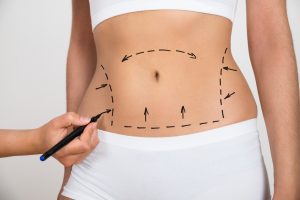
Women tend to store fat around the abdomen, thighs, and buttocks areas. In men, fat mostly accumulates in the belly, buttocks, and chest areas. If you have been losing weight but are struggling to remove that stubborn belly, buttocks, or thigh fat, then liposuction may be right for you.
Liposuction is not a miracle weight-loss therapy, and is most effective when used to help remove excess fat that your body has a harder time getting rid of from exercise alone. Liposuction does not remove cellulite, dimples, or stretch marks.
Facts About Liposuction
- The operation is normally carried out under general anesthetic
- Liposuction is not a weight-loss tool, it is purely cosmetic, and its effects are subtle
- Over 400,000 liposuction procedures are carried out yearly
- There are a number of associated risks including infection and scarring, these are normal to general surgeries
- Liposuction is not a treatment for obesity
Liposuction permanently removes fat cells from your body, altering the shape and overall contour of your body. However, if you do not lead a healthy lifestyle after the operation, there is a risk that the remaining fat cells can grow bigger and result in the procedure being useless.
The amount of fat that can be safely removed is limited.
Liposuction is appropriate for the following types of conditions:
- Post-partum (pregnancy) fat
- Natural aging fat deposits
- Eliminating stubborn fat deposits
- After C-section birth procedure
- For patients with superficial abdominal fat deposits.
Liposuction has a number of possible risks, including infection, numbness, and scarring. If too much fat is removed, there may be lumpiness or dents in the skin. Experts say that the surgical risks are linked to the amount of fat removed, and it is best to undergo liposuction only if a professional deems you a good candidate.

Experts say that liposuction should ideally only be used if you were not able to achieve the desired fat-loss with a lifestyle change. For example, if some unsightly areas of fat remain after months of training and weight loss, this fat may be resistant to exercise and diet and require liposuction.
When an individual gains weight, each fat cell increases in size and volume. Liposuction reduces the number of fat cells in these isolated and stubborn areas.
Patients should discuss the pros and cons of liposuction with their doctor before deciding on whether to proceed with treatment. Liposuction should only be carried out after a thorough examination with your doctor as well as a professionally certified liposuction treatment team. Results are never dramatic; they are subtle, and liposuction is most effective when a touch up is needed, and will not result in a dramatic difference in overweight individuals.


